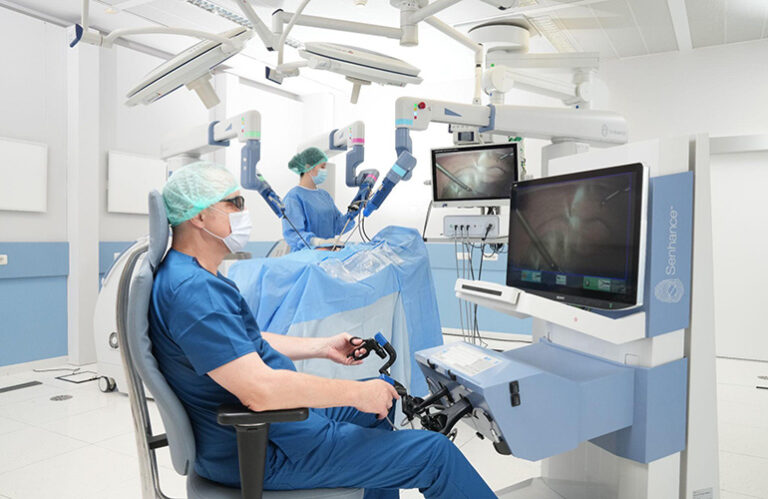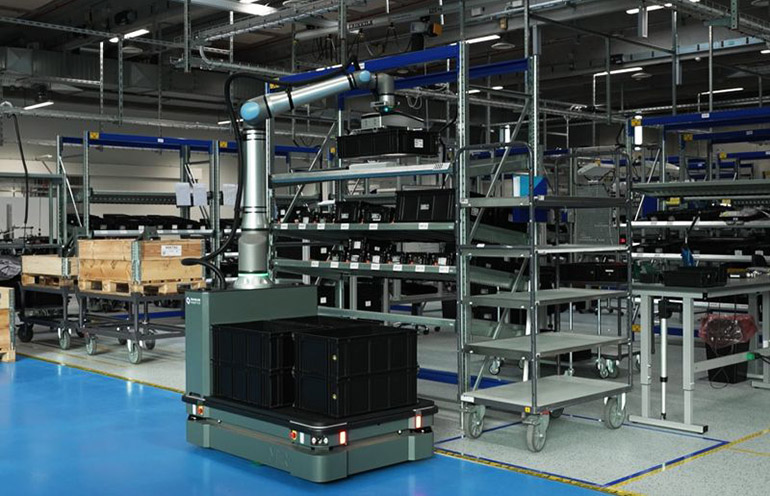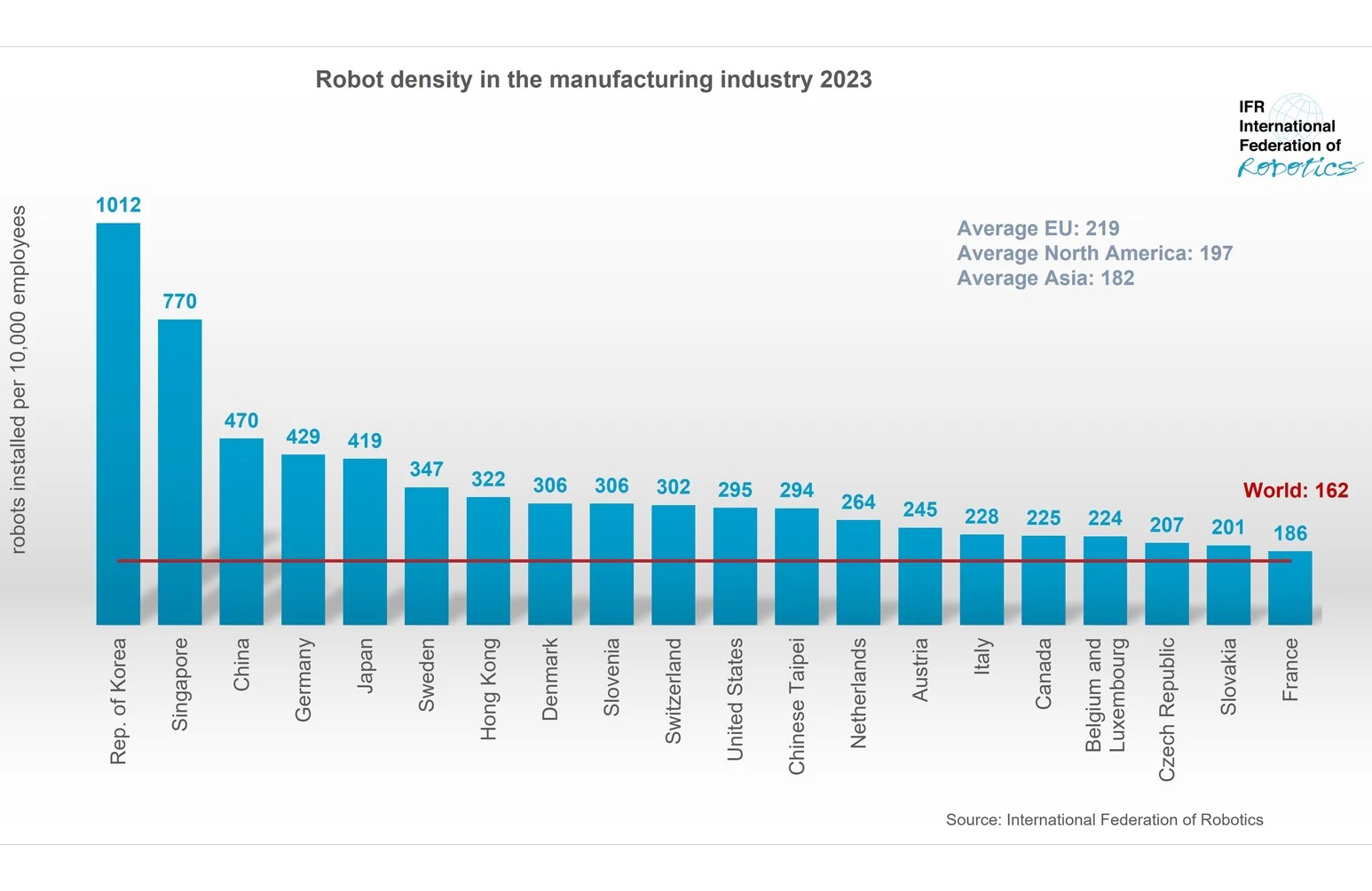Utilizing massive volumes of data is “the next wave of work” for surgical robotics developers, industry vet Mark Toland said in an interview wit Medical Design & Outsourcing.
“We’ve all done a good job of building the hands and connecting them to the eyes,” Toland said. “But how do we use the data to start doing more intraoperative assistance algorithms?”
Toland is the CEO of surgical robotics developer Medical Microinstruments (MMI), an independent board director for Moon Surgical, and the former president and CEO of Corindus Vascular Robotics, which Siemens bought for $1.1 billion in 2019. He’s also a partner and entrepreneur in residence at Biostar Capital, serves on the board of cardiovascular AI developer Cardiologs, and is executive chair of Amplitude Vascular Systems (AVS).
Toland envisions the future of artificial intelligence in surgical robotics as more than just informing a surgeon how to best perform an operation, but to actually perform some or all of the steps.
“The world of surgical robotics is just beginning,” Toland said, “because we’re working in what I call intraoperative AI. It’s not diagnostic, it’s not a chest X-ray where you get to sit there and look at it and compare it to a million data sources. This is live. This is a different patient versus the last patient you did.”
Intraoperative AI for surgical robotics
A surgeon in the background of this photo holds controls that operate the micro robot arms of the Medical Microinstruments Symani surgery system. | Source: MMI
Toland imagines it might come to pass in the next decade, and sees three phases in the push for surgical robotics intraoperative AI: data collection, algorithms and reference sources. Most surgical robotics developers are already collecting data, typically pairing vision data with robotic movement, he said.
“What you do with that data is an interesting thing,” he said. “Intuitive and others may be benchmarking against other data that exists out there. They may be telling you to do [a procedure] like one particular physician did it, or they may be creating an algorithm that allows you to do something like a common task that you previously were doing manually or robotically assisted.”
“That’s the third part,” he continued. “If you get to that point where you’re doing a common task, which is where everybody’s trying to get to — in other words, the robot’s doing something you were previously doing for it — you need reference sources to be able to draw upon to give you a sphere of robotic movement. To get to where you’re truly doing this AI-type work over some reference source, over some data that sits in a different world and giving you insight into how to do a particular procedure, I still think we’re a long ways away from that.”
Regulatory challenges — especially around cybersecurity — are likely to be bigger barriers than the technical challenges, he said. “Blending those two strategies together will be important.”
“One of the hardest things for robotics companies right now is trying to figure out the moving target of cybersecurity requirements,” Toland said. “Now that you continue to see some of these hospital systems like Ascension get attacked, the walls are going to continue to go up and up and up on technology.”
Surgical robotics leaders like Intuitive can help the rest of the industry by leading with regulators.
“Them blazing the trail for us is super important to the space,” Toland said. “We’re doing soft tissue — just smaller soft tissue — and they’re doing soft tissue, but bigger soft tissue. Doing what they do best is helping all of us.”
Surgical robotics M&A fueling R&D
Asked for his thoughts on Karl Storz’s purchase of Asensus Surgical, he said the acquisition might not the outcome investors hoped for, but it can keep advancing the company’s technology and benefits the field of surgical robotics.
“Anytime a strategic is investing in robotics is a good thing. … What I like about that deal [is] you’ve got big pockets that can put money into it from an R&D perspective and really continue to accelerate in applications that, quite honestly, we need,” Toland said. “We’ve never really explored robotics in pediatrics, and they’re going to have a real keen chance of doing that.”
“It’s not easy to go build a robotic platform,” he continued. “I always tell people it takes seven to eight years to build a robotic platform, and then after you do that you’ve got to figure out how you’re going to manufacture it. … You’ve got design principles, but then can you scale it and mass produce it?”
Editor’s Note: This article was syndicated from The Robot Report’s sibling site Medical Design and Outsourcing.

 4 months ago
58
4 months ago
58










 English (US) ·
English (US) ·